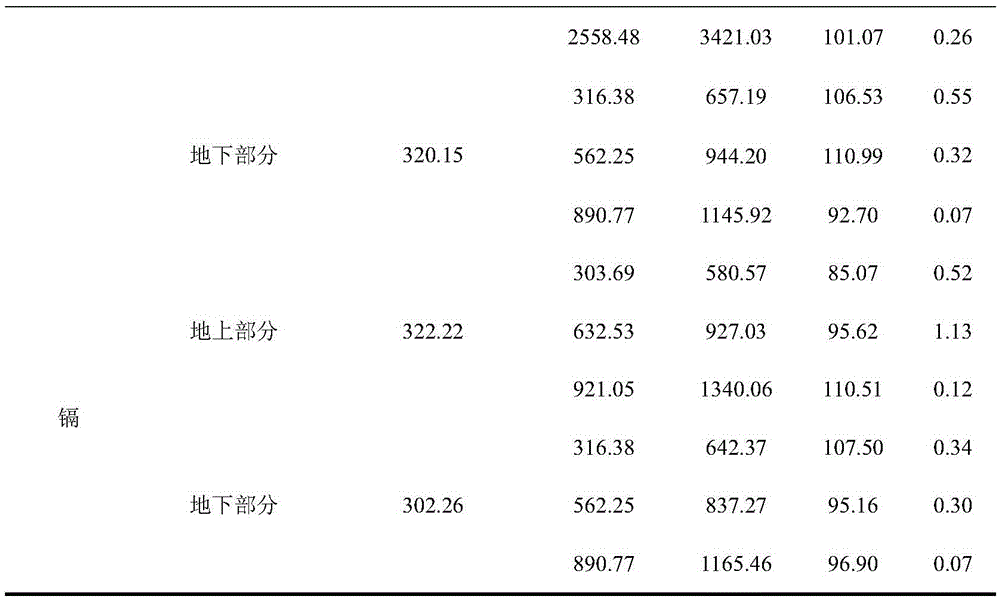Method for measuring Pb/Dc content in polluted soil remediation plant Calendula officinalis by ICP-OES (inductively coupled plasma and optical emission spectrometry)
A technology for remediation of plants and polluted soil, applied in material excitation analysis, thermal excitation analysis, etc., can solve the problems of inability to detect multiple elements at the same time, increased detection of heavy metals, complex detection methods, etc., to achieve wide applicability and use a small amount of samples , the effect of easy operation
- Summary
- Abstract
- Description
- Claims
- Application Information
AI Technical Summary
Problems solved by technology
Method used
Image
Examples
Embodiment 1
[0020] The first step: Sowing Calendula officinalis seeds in the Pb / Cd compound polluted soil that has been configured, after the seedling grows 35 days, chelating agent EDTA and tartaric acid are all added to water, and chelating agent EDTA and tartaric acid press concentration ratio 1: The ratio of 1 (EDTA is 1mmol / L, tartaric acid concentration is 1mmol / L) is formulated into a solution, evenly sprayed in the potting soil, after 50 days, the seedlings are taken out with roots, washed with ultrapure water, and placed in an oven at 105 After drying at ℃ for 30 minutes, adjust to 70 ℃ and dry to constant weight. Divide Calendula officinalis seedlings into aerial part A and underground part B, weigh them with electronic balance and grind them into powder A and powder B for later use.
[0021] Step 2: Put powder A and powder B in 100mL beakers respectively, add V(HNO 3 ): V(HClO 4 )=5:1 mixed solution, let it stand at room temperature for 24h to fully digest, then place it in a ...
Embodiment 2
[0024] The process of planting and sample preparation of restoration plant Calendula officinalis is the same as that in Example 1.
[0025] The chelating agent EDTA and tartaric acid were formulated into a solution at a concentration ratio of 1:2 (EDTA was 1mmol / L, and the concentration of tartaric acid was 2mmol / L), and was evenly sprayed in the potting soil. Carry out sample detection, the sample is recorded as T 3 , see Table 3 for details.
Embodiment 3
[0027] The process of planting and sample preparation of restoration plant Calendula officinalis is the same as that in Example 1.
[0028] The chelating agent EDTA and tartaric acid were formulated into a solution at a concentration ratio of 1:3 (EDTA was 0.5mmol / L, and the concentration of tartaric acid was 1.5mmol / L), and was evenly sprayed in the potting soil, and the other conditions were unchanged. The OES instrument performs sample detection, and the sample is recorded as T 2 , see Table 3 for details.
PUM
 Login to View More
Login to View More Abstract
Description
Claims
Application Information
 Login to View More
Login to View More - R&D Engineer
- R&D Manager
- IP Professional
- Industry Leading Data Capabilities
- Powerful AI technology
- Patent DNA Extraction
Browse by: Latest US Patents, China's latest patents, Technical Efficacy Thesaurus, Application Domain, Technology Topic, Popular Technical Reports.
© 2024 PatSnap. All rights reserved.Legal|Privacy policy|Modern Slavery Act Transparency Statement|Sitemap|About US| Contact US: help@patsnap.com










